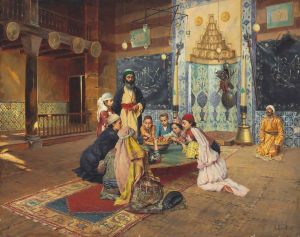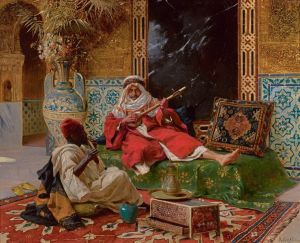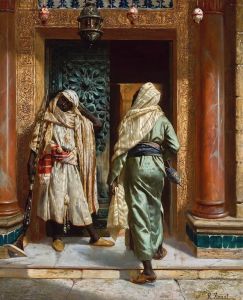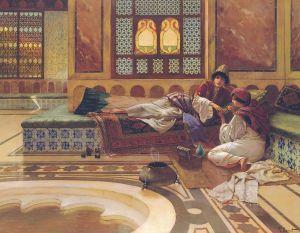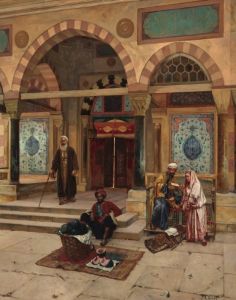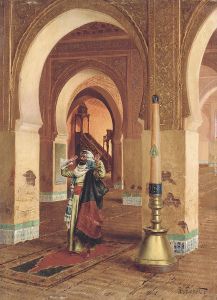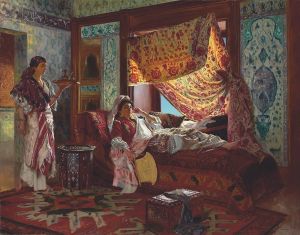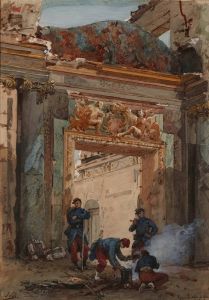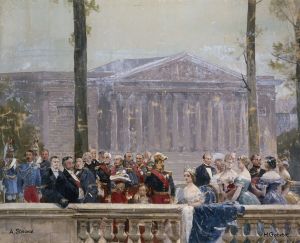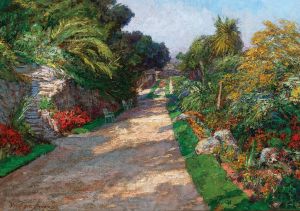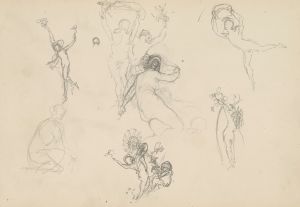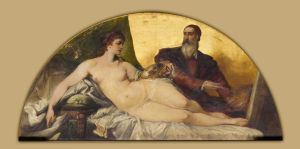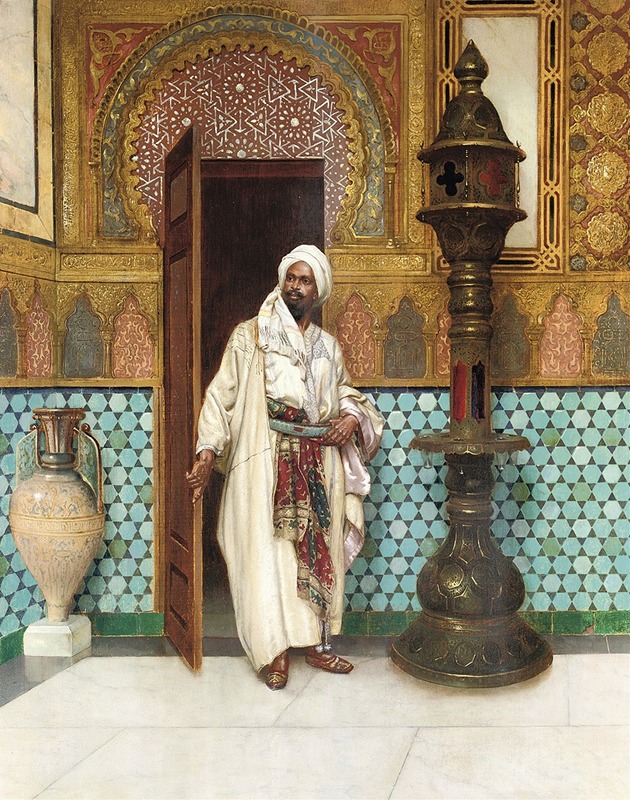
An elegant chieftain in his palace
A hand-painted replica of Rudolf Ernst’s masterpiece An elegant chieftain in his palace, meticulously crafted by professional artists to capture the true essence of the original. Each piece is created with museum-quality canvas and rare mineral pigments, carefully painted by experienced artists with delicate brushstrokes and rich, layered colors to perfectly recreate the texture of the original artwork. Unlike machine-printed reproductions, this hand-painted version brings the painting to life, infused with the artist’s emotions and skill in every stroke. Whether for personal collection or home decoration, it instantly elevates the artistic atmosphere of any space.
Rudolf Ernst was an Austrian painter known for his Orientalist works, which often depicted scenes inspired by the cultures and architecture of the Middle East and North Africa. His painting "An Elegant Chieftain in His Palace" is a notable example of his work in this genre, showcasing his attention to detail and fascination with exotic themes.
Ernst was born in Vienna in 1854 and studied at the Academy of Fine Arts in Vienna. He later moved to Paris, where he became part of the Orientalist movement, a trend in 19th-century art that sought to capture the essence of the East as imagined by Western artists. This movement was characterized by its romanticized and often idealized portrayals of Eastern subjects, including landscapes, architecture, and people.
"An Elegant Chieftain in His Palace" reflects Ernst's skill in rendering intricate details and his ability to create a sense of opulence and grandeur. The painting typically features a chieftain, a figure of authority and nobility, seated in a richly decorated interior. The setting is lavish, with ornate furnishings, luxurious textiles, and elaborate architectural elements that suggest wealth and power. Ernst's use of color and light enhances the sumptuousness of the scene, drawing the viewer into a world of elegance and sophistication.
Ernst's work is characterized by his meticulous attention to detail, particularly in the depiction of textures and patterns. In "An Elegant Chieftain in His Palace," this is evident in the intricate designs of the carpets, the delicate embroidery of the fabrics, and the detailed carvings of the architectural elements. These details not only add to the visual richness of the painting but also serve to transport the viewer to a different time and place, evoking the mystery and allure of the Orient as perceived by Western audiences of the time.
The Orientalist movement, of which Ernst was a part, has been the subject of much discussion and critique, particularly regarding its portrayal of Eastern cultures through a Western lens. Critics argue that such works often reflect the biases and fantasies of the artists rather than the realities of the cultures they depict. However, they also acknowledge the technical skill and artistic merit of these works, which continue to be appreciated for their beauty and craftsmanship.
Rudolf Ernst's paintings, including "An Elegant Chieftain in His Palace," remain popular among collectors and art enthusiasts. They are valued not only for their aesthetic qualities but also for their historical significance as part of the broader Orientalist movement. Ernst's ability to capture the imagination of his audience with his detailed and evocative scenes ensures his place in the history of 19th-century art.
While specific details about "An Elegant Chieftain in His Palace" may be limited, the painting exemplifies Ernst's artistic style and his contribution to the Orientalist genre. His works continue to be studied and admired for their intricate detail and their role in the cultural exchange between East and West during the 19th century.







